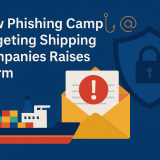Vetting remains a vexed issue
December 3, 2020 Maritime Safety News
Historically, vetting was performed by retirees from the oil majors. Their judgements were to a large extent trusted by industry as they were known to the various parties and they in turn knew the values and the cultures of the various companies that they were interacting with.
In the intervening years vetting has moved on considerably, but there is a general sense that the quality of discussions between inspectors and operators has declined.
In 1992 the SIRE system came into force. One of its primary drivers was to reduce the vetting burden, and within a year a uniform inspection format was designed to replace the individual programmes in place. The system ran relatively smoothly following its introduction.
The next major step change came in 1999 in the wake of the Erika incident. Inevitably, this incident led to increased focus on clearance and vetting. Almost overnight a whole generation of vessels – notably single hull VLCCs – became unacceptable overnight.
A further step change came in the wake of the 2002 Prestige incident. Pior to that oil companies had basically taken the view that owners had a ‘right’ to get their ship inspected. Following Prestige the attitude increasingly taken was that if a vessel did not correspond with the oil companies minimum age and type requirements they no longer felt an automatic obligation to inspect the vessel. Oil companies also stopped issuing letters saying that a vessel was satisfactory, confining themselves in writing to thanking owners for participating in their onboard inspection programme: nothing more nothing less.
There is a popular view in industry that this marked an important turning point in the quality of dialogue between the stakeholders in the vetting process. Vetting organisation typically felt – for fear of litigation if something went wrong – that they could no longer tell the owner whether a ship passed an inspection.
Around 2004, the Oil Companies International Marine Forum (OCIMF) issued the Tanker Self-Management Assessment scheme, an ambitious effort to get owners to focus on a continuous quality approach.
Fast forwarding to the present, it can be seen that impressive steps have been taken toward harmonising requirements and harnessing new technology. But the cost and complexity of compliance has multiplied too. Many now see vetting ‘as an industry within the industry’, with an annual estimated cost of US$300 million – US$500 million.
Today the likelihood that an inspector is a former Master is increasingly remote. Now it is not unusual for former Masters to be lured out of retirement, back into their shipowning companies at some expense, so that the letter of an oil major’s matrix requirement can be fulfilled. It is open to question whether such an approach fulfils the spirit of oil majors’ safety requirements.
Many within the industry regard inspectors as ‘distant contractors’ with less of a relationship with the oil companies than their predecessors. In parallel, people within the vetting organisations have changed, and many new owners, operators and trading entities have entered into the market, increasing the distance between owner/operator and vetting organisation.
Wallem’s head of shipmanagement in Europe, Dave Martin, makes the point in this issue that another of the inspection companies makes it a key performance indicator for inspectors to achieve a certain number of observations per ship. “This reduces the value of the inspection from one about quality of operation to one that is purely observations,” he says.
Other tensions are being reported in the wider industry. Inspections are supposed to be done in an operational mode according to SIRE, but many oil companies will only accept them when they are done in discharge ports, which places huge constraints and pressures on crew and vessel operations. The number of inspections that vessels need to field is another concern. And there are now stories circulating of oil companies insisting that the CEO of a shipping company routinely visit vessels. While a visit from top management can be good for morale and motivation, it is questionable whether this should be enshrined within the Vessel Inspection Questionnaire that is the bible that inspectors use, and can cite as authority for a negative observation.
So what’s the bottom line? Industry needs one system that is trusted, harmonised and transparent. Useful headway is being made in this direction through industry associations, notably Intertanko and OCIMF, but the industry mood music indicates we are not there yet. TST
Source: rivieramm





